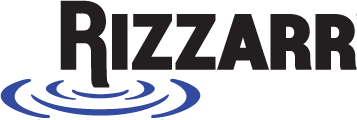In today’s fast-paced work environment, productivity tools have become essential for professionals aiming to streamline their workflows, manage tasks efficiently, and optimize collaboration. Whether you are a business executive, a software developer, a project manager, or a freelancer, leveraging the right tools can significantly improve efficiency and output.
This article explores the best productivity tools across various categories, from task management and communication to automation and focus enhancement.
Task and Project Management
1. Asana
Asana is one of the most widely used project management tools, helping teams organize tasks, set priorities, and track progress in real time. With its intuitive interface and robust integration capabilities, Asana is ideal for businesses managing complex projects.
Key Features:
- Task assignment and deadlines
- Workflow automation
- Integration with Slack, Google Drive, and Microsoft Teams
2. Trello
Trello is a visual project management tool that uses a Kanban board system to manage tasks and workflows. It is highly effective for teams and individuals who prefer a simple, drag-and-drop task management approach.
Key Features:
- Customizable boards, lists, and cards
- Task collaboration and file sharing
- Power-ups for advanced integrations
3. ClickUp
ClickUp is a powerful all-in-one productivity platform that combines project management, document collaboration, goal setting, and workflow automation. It is highly customizable, making it suitable for diverse industries.
Key Features:
- Multiple task views (list, board, calendar)
- Custom dashboards and reporting tools
- Time tracking and goal setting
Communication and Collaboration
4. Slack
Slack is a leading communication platform designed for professional teams to streamline conversations and collaboration. It reduces reliance on email and enables real-time messaging, file sharing, and integrations with various productivity apps.
Key Features:
- Channels for team-based discussions
- Integration with Asana, Zoom, and Google Drive
- Advanced search and message threading
5. Microsoft Teams
Microsoft Teams is a collaboration platform that integrates with Microsoft 365, offering a seamless communication experience for enterprises. It combines chat, video conferencing, and document collaboration in a single interface.
Key Features:
- Direct integration with Microsoft Office applications
- Secure cloud-based file sharing and storage
- Meeting scheduling and video conferencing
6. Zoom
Zoom remains the top choice for virtual meetings and remote collaboration. It provides high-quality video conferencing, screen sharing, and webinar hosting features, making it an essential tool for businesses and remote teams.
Key Features:
- HD video and audio conferencing
- Breakout rooms for team discussions
- Meeting recording and transcription
Automation and Workflow Optimization
7. Zapier
Zapier is an automation platform that connects different applications to streamline workflows and eliminate repetitive tasks. It enables users to create automated workflows (Zaps) between thousands of apps.
Key Features:
- No-code automation
- Integration with over 5,000 apps
- Multi-step workflows for complex processes
8. Notion
Notion combines note-taking, project management, and collaboration features in a single platform. It is widely used by teams and individuals to organize information, create knowledge bases, and plan projects efficiently.
Key Features:
- Customizable databases and templates
- Real-time document collaboration
- Integration with Slack and Google Calendar
9. Airtable
Airtable is a flexible cloud-based database tool that blends spreadsheet functionalities with powerful automation and collaboration features. It is used for project tracking, content planning, and data management.
Key Features:
- Customizable data fields and relational database support
- Automation of repetitive tasks
- Integration with third-party apps like Slack and Dropbox
Focus and Time Management
10. RescueTime
RescueTime is an analytics-driven productivity tool that tracks time spent on different activities and applications. It provides insights into daily work habits and helps users optimize their time.
Key Features:
- Automatic time tracking and detailed reports
- Focus mode to block distractions
- Goal setting for improved productivity
11. Todoist
Todoist is a task management tool that helps professionals organize tasks, set priorities, and track progress with a minimalist interface. It is highly effective for personal and professional task management.
Key Features:
- Task categorization and reminders
- Recurring due dates and project templates
- Integration with Google Calendar and Slack
12. Forest
Forest is a unique productivity app that encourages focus by using a gamified approach. Users plant a virtual tree that grows as long as they stay focused on their tasks and away from distractions like social media.
Key Features:
- Distraction-blocking functionality
- Time tracking and productivity reports
- Syncing across multiple devices
File Management and Document Collaboration
13. Google Drive
Google Drive provides secure cloud storage and seamless collaboration on documents, spreadsheets, and presentations. It is a preferred choice for businesses that rely on real-time document sharing.
Key Features:
- Secure cloud-based storage with advanced sharing options
- Real-time collaboration on Google Docs, Sheets, and Slides
- Integration with third-party applications
14. Dropbox
Dropbox is a cloud storage and file-sharing platform known for its advanced security and collaboration features. It is widely used by businesses for document management and team collaboration.
Key Features:
- Secure file storage with access control
- Automatic file synchronization
- Integration with Microsoft Office and Slack
15. Evernote
Evernote is a note-taking and organization tool that helps professionals capture ideas, manage tasks, and store documents in one place. It is especially useful for research and knowledge management.
Key Features:
- Rich-text note-taking with multimedia support
- Cross-device synchronization
- AI-powered search and document scanning
Conclusion
Choosing the right productivity tools can significantly enhance efficiency, reduce workload stress, and improve collaboration. Whether you need a project management tool, an automation platform, or a focus-enhancing application, the tools listed above provide reliable solutions to enhance professional productivity in 2024.
Investing time in selecting and integrating these tools into daily workflows can lead to increased efficiency, better organization, and higher overall productivity.







